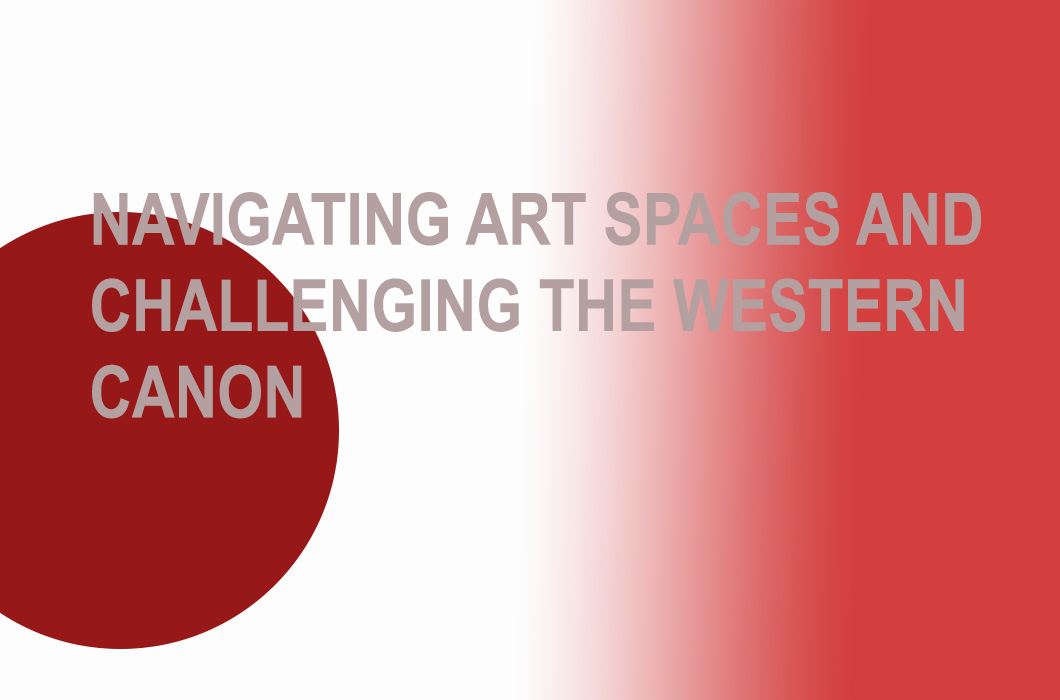This article was originally published in the Between issue
[Written by Gabriela Saldanha Blackwood]
[Image by Julia Rosner & Aike Jansen]
As I write this, a poster of Picasso’s ‘La Minotauromaquia’ (1981) that I bought on a recent trip to Barcelona is in my line of vision—one of the corners is peeling up, yet it persists. I loved it for its quintessential mythological iconography: the minotaur, the dove, the woman’s profile. I question if I should take it down, and pass it on to someone else to use as trivial wall decoration in their bare student tenement flat. Even when I put it up, I felt as though in some way, I was betraying a line of thought I have recently been exploring, as though I was making an exception, compromising my beliefs for aesthetic indulgence.
I was fed on Picasso and Titian and Schiele. I was fed on Matisse and Gaugin and Rodin. I was fed on objectified (white, cis, able-bodied) female bodies. I learnt about the “female body” as a pre-adolescent through Lucien Freud. That makes me angry. The culture by which my world was contextualised was built by the visions of white men, of their white male gaze. Not only does the Western canon—upheld by our institutions of culture—dismiss me, but it oppresses me. How much of myself do I have to ignore, deny, and suppress in absorbing the rooms of hundreds upon hundreds of exposed female bodies or exotified people of colour and finding beauty in them. Being objective requires emotional labour because my identity is not neutral, and the spaces that display these works are not neutral either.
The galleries that I romantically describe as second homes—some whose rooms are so imprinted upon my memory that returning to them brings me a unique calm—are beacons of colonialism. Museums were set up to display treasures from the lands of conquest; only accessible to royalty. This history has never been challenged or subverted; instead it has been preserved and upheld to prioritise the importance of “the archive”. They are now as they ever were, places where people of socio-economic privilege determine what credible art is. And how can I, as a Latina woman, reconcile myself with this? Once you see it, it is hard to un-see the pervasive masculinity and whiteness in these buildings.
I feel trapped in a state of between. In so many ways these buildings and works of art have informed my art education, detaching and unhooking emotional ties completely seems damaging at this point. I still revere “master’s” paintings as exquisite and compelling; however, this is mainly because my frame of appreciation was built in relation to them. Currently I am at a point where I want to work on re-contextualising the work I know—holding the artist accountable—and broadening the work I expose myself to. How many artists have I overlooked because I was prioritising works that institutions deem legitimate?
There are so many female/non-binary artists of different ethnicities and stories who have created work that I do not have to compromise an aspect of myself to appreciate—they do not detach the work from themselves, and that is also not asked of us as their audience. Instead they create with their hands, their whole bodies, and their brilliant minds. They challenge the objective and demand us to be subjective. Nothing is more restorative than being taken in by their work and their worlds. These are the artists I will work to invest my time, emotions, and money into:
Toyin Ojih Odutola
Tarsila do Amaral
Louis Bourgeois
Paula Rego
Leonora Carrington
Yayoi Kusama
Mona Hatoum
Frida Kahlo
Harmonia Rosales
Tove Jansson
Rina Banerjee
Carrie Mae Weems
Kara Walker
Georgia O’Keefe
Lorna Simpson
Art Hoe Collective
Uemura Shōen
Judy Chicago
This article was inspired by a post by @art.exit
[Image Description: A gradient background from white to red with the words ‘Navigating art spaces and challenging the western canon’ in grey font, with a red circle on the left side.]

